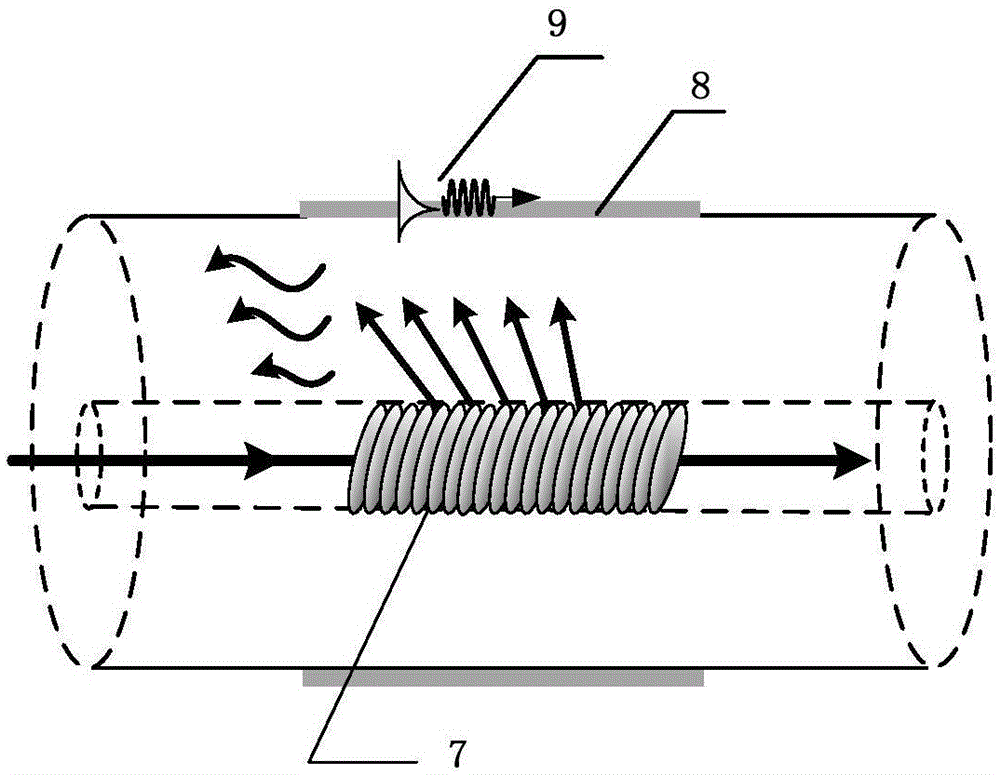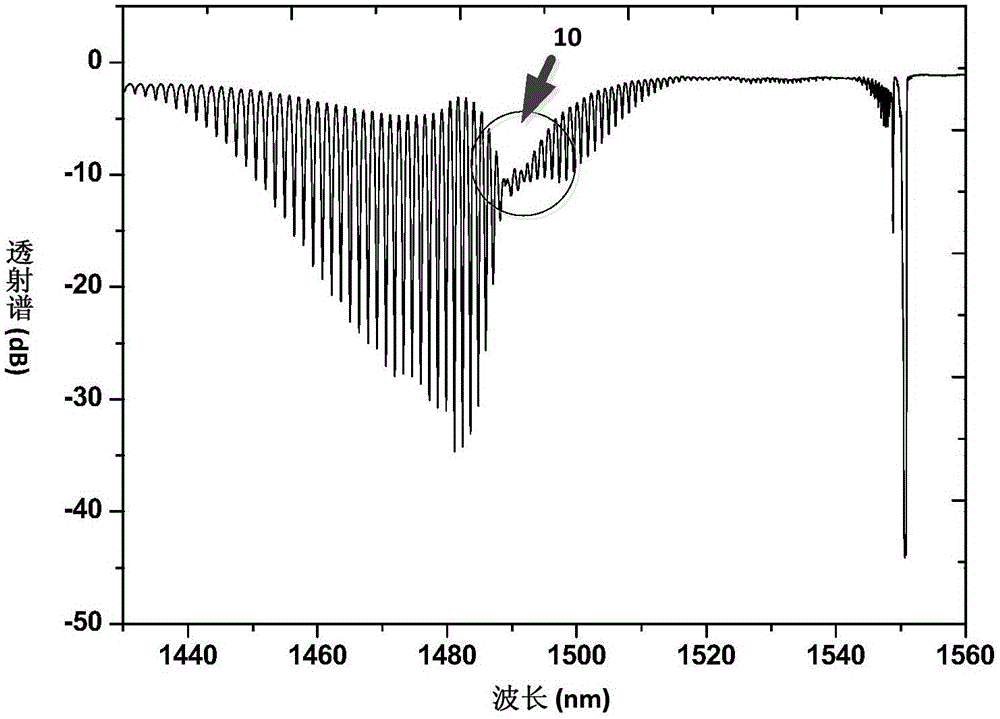Device and method for detecting glucose based on optical fiber surface plasma resonance
A surface plasmon and detection device technology, applied in the direction of measuring devices, material analysis through optical means, instruments, etc., can solve the problems of limited popularization and application, complex biological sensitive membranes, expensive and precise wavelength demodulators, etc., and achieve simplification The effect of the preparation process
- Summary
- Abstract
- Description
- Claims
- Application Information
AI Technical Summary
Problems solved by technology
Method used
Image
Examples
Embodiment
[0036] Such as figure 1 As shown, this embodiment discloses a glucose detection device based on optical fiber surface plasmon resonance, which includes a light source 1, a polarizer 2, a polarization controller 3, a sensor probe 4, a filter 5 and a photodetector sequentially connected through an optical fiber device 6; such as figure 2 As shown, the sensor probe 4 includes an optical fiber engraved with a tilted fiber grating 7, and the outer surface of the fiber cladding is coated with a metal film 8 with a nanometer thickness. The light emitted by the light source 1 is incident on the sensor after passing through the polarizer 2 and the polarization controller 3 In the optical fiber with a tilted fiber grating engraved with the probe 4, the cladding mode generated in the optical fiber that satisfies the phase matching condition is coupled to the metal film on the outer surface of the optical fiber cladding to excite the surface plasmon resonance, and the sensor probe will c...
PUM
| Property | Measurement | Unit |
|---|---|---|
| Inclination | aaaaa | aaaaa |
| Length | aaaaa | aaaaa |
| Thickness | aaaaa | aaaaa |
Abstract
Description
Claims
Application Information
 Login to View More
Login to View More - R&D
- Intellectual Property
- Life Sciences
- Materials
- Tech Scout
- Unparalleled Data Quality
- Higher Quality Content
- 60% Fewer Hallucinations
Browse by: Latest US Patents, China's latest patents, Technical Efficacy Thesaurus, Application Domain, Technology Topic, Popular Technical Reports.
© 2025 PatSnap. All rights reserved.Legal|Privacy policy|Modern Slavery Act Transparency Statement|Sitemap|About US| Contact US: help@patsnap.com



